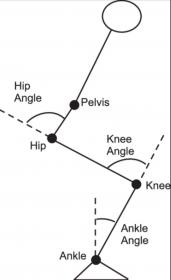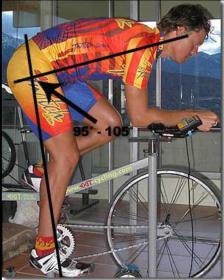You are semi-neck reining some of the time. You can see it on both jumps in slow mo in the line with the stop, since you are coming towards the camera, both hands are moving indirectly trying to steer. Also your elbows are pretty straight and hands in your lap, or sometimes elbows bent out to the sides. All of that gives you a lot less room to release, hence keeping your reins too long.
If you lift your hands up and bend your elbows back, you will have a lot more “travel” room in your arms to follow the horse. Watch Margie go over the wall https://youtu.be/3-WqE5fr55U … her rein length never, ever changes (even when she’s using the crop in the air over a, technical term here, “huge —” oxer, she is amazing) but she also never catches her horse in the mouth. Instead she moves her hands and since she starts with elbows bent, hands up she has lots of room to do it.
”‹”‹”‹”‹For the lower leg, it can be quite easy to fake it in a normal two point on the flat, especially if you have good balance. At a halt, in two point, no hands on the neck, have someone on the ground stand in front of you and hold the reins between you and the horse and try to pull you forward with the reins. You will either use your lower leg or spin around like a pinwheel. (If you don’t have anyone on the ground, maintaining two point through transitions, especially down transitions, can also be helpful.)




